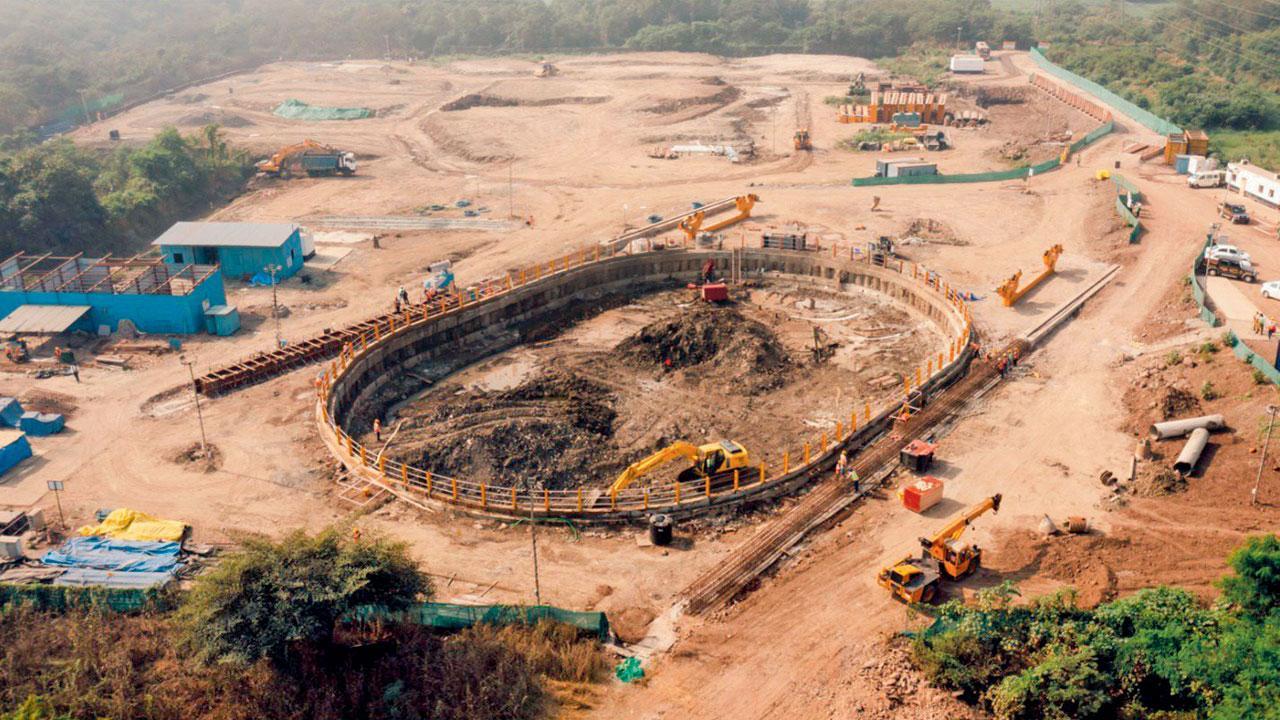Officials say there have been multiple challenges, including the need for multiple controlled blasts

Work underway at Shilphata, Vikhroli and Sawli
Key Highlights
- Construction of the 21-km-long tunnel has reached a crucial stage
- This shaft will be used to lower two tunnel boring machines in different directions
- India’s first underground/undersea tunnel is under construction
Construction of the 21-km-long tunnel—including India’s first 7-km-long undersea tunnel—which is part of the Mumbai-Ahmedabad bullet train project has reached a crucial stage, with 100 per cent work of shaft piling at Vikhroli being completed. This shaft will be used to lower two tunnel boring machines in different directions—one towards Bandra Kurla Complex (BKC) and the other towards Ghansoli. India’s first underground/undersea tunnel is under construction for bullet train stations at BKC and Shilphata near Kalyan, which will be underground.
ADVERTISEMENT
“Construction work has already begun at five locations. Shaft 1 is at the Mumbai HSR station construction site where the depth is 36 metres. Secant piling work is 100 per cent completed and excavation work is currently underway,” the National High Speed Rail Corporation Ltd (NHSRCL) spokesperson said. According to the official, the shaft at Vikhroli also has a depth of 36 metres and piling work has been completed, with excavation work currently underway. “This shaft will be used to lower two tunnel boring machines,” she said, adding that shaft 3 at Sawli (near Ghansoli) is 39 metres deep and excavation work has started.
The official further stated that work at Shilphata is being carried out using the New Australian Tunnelling Method (NATM), and the portal work has already begun at the site. “The fifth one is an additionally driven intermediate tunnel portal which will facilitate additional access to the underground/undersea tunnel for faster construction progress.” Using NATM, there are challenges in the construction of shafts, including the need for multiple controlled blasts that adhere to noise and air pollution prevention measures.
“Shafts are constructed in areas with high population density and several other utilities like various pipelines, electrical installation and other adjoining infrastructure projects like the Metro, highways etc. It is being ensured that work is being done with minimal disruption. Disposal of excavated material is done under supervision of the Maharashtra Pollution Control Board (MPCB) and each trip is approved using a GPS tracker, etc.,” said the official.
Tube Tunnel
The tunnel will be a single tube tunnel to accommodate a twin track for both up and down movement. There will also be 39 equipment rooms at 37 locations adjacent to the tunnel location as part of the package. This tunnel will be about 25-57 metres deep from the ground level and the deepest construction point will be 114 metres, below Parsik Hill near Shilphata.
7 km
Length of tunnel that will run under the sea
 Subscribe today by clicking the link and stay updated with the latest news!" Click here!
Subscribe today by clicking the link and stay updated with the latest news!" Click here!







